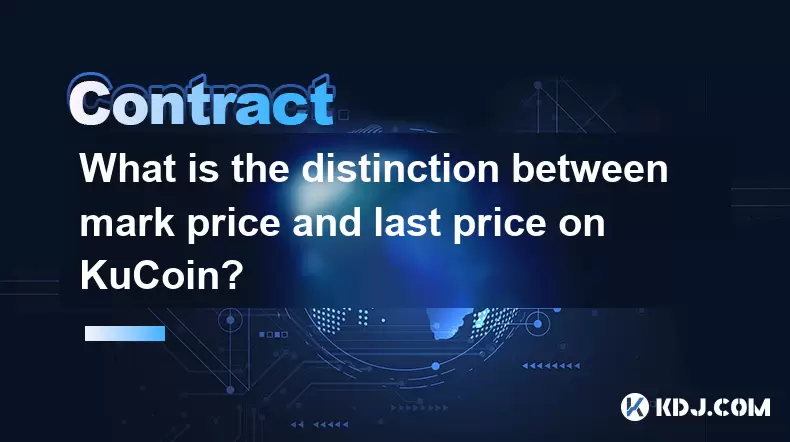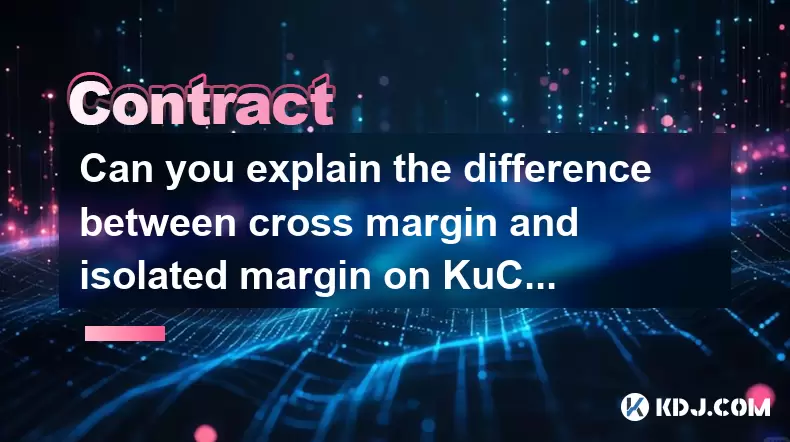-
 Bitcoin
Bitcoin $116700
0.24% -
 Ethereum
Ethereum $3973
4.34% -
 XRP
XRP $3.283
7.68% -
 Tether USDt
Tether USDt $1.000
0.01% -
 BNB
BNB $789.8
2.27% -
 Solana
Solana $176.2
3.31% -
 USDC
USDC $0.9999
0.00% -
 Dogecoin
Dogecoin $0.2238
5.14% -
 TRON
TRON $0.3389
-0.51% -
 Cardano
Cardano $0.7907
4.03% -
 Stellar
Stellar $0.4527
10.02% -
 Hyperliquid
Hyperliquid $41.07
4.27% -
 Sui
Sui $3.794
1.77% -
 Chainlink
Chainlink $19.49
10.40% -
 Bitcoin Cash
Bitcoin Cash $580.9
0.74% -
 Hedera
Hedera $0.2617
4.32% -
 Avalanche
Avalanche $23.41
3.67% -
 Ethena USDe
Ethena USDe $1.001
-0.03% -
 Litecoin
Litecoin $122.4
1.38% -
 Toncoin
Toncoin $3.364
1.49% -
 UNUS SED LEO
UNUS SED LEO $8.988
0.37% -
 Shiba Inu
Shiba Inu $0.00001295
2.82% -
 Uniswap
Uniswap $10.62
5.75% -
 Polkadot
Polkadot $3.922
4.46% -
 Dai
Dai $1.000
0.01% -
 Bitget Token
Bitget Token $4.494
2.15% -
 Monero
Monero $268.0
-1.30% -
 Cronos
Cronos $0.1523
3.68% -
 Pepe
Pepe $0.00001127
4.43% -
 Aave
Aave $285.4
4.85%
What is the margin requirement for Coinbase Contracts?
Coinbase Contracts uses a dynamic margin requirement, adjusting based on asset volatility, position size, and leverage. Understanding this variable system, readily accessible on the platform, is crucial to avoid liquidation and manage risk effectively.
Mar 24, 2025 at 01:29 pm

Key Points:
- Coinbase Contracts, Coinbase's derivatives trading platform, uses a variable margin requirement system.
- This system dynamically adjusts the margin based on several factors, including the volatility of the underlying asset and the trader's position size.
- Understanding the margin requirement is crucial to avoid liquidation.
- Coinbase provides tools and information to help traders manage their risk and margin levels.
- Leverage significantly magnifies both profits and losses, demanding careful risk management.
What is the margin requirement for Coinbase Contracts?
Coinbase Contracts, unlike spot trading, allows users to leverage their positions. This means you can control a larger amount of cryptocurrency than you actually own, potentially amplifying profits. However, this also increases risk. The margin requirement is the amount of capital you need to maintain your leveraged position. It's not a fixed percentage but a dynamic figure.
The margin requirement on Coinbase Contracts isn't a simple, fixed percentage like 10% across the board. Instead, it’s a variable margin, constantly recalculated based on several key factors. This dynamic adjustment aims to mitigate risk for both the trader and the exchange.
One primary factor influencing the margin requirement is the volatility of the underlying cryptocurrency. Highly volatile assets, prone to sharp price swings, will generally demand a higher margin requirement. This is a protective measure to prevent rapid liquidation during sudden market movements. A less volatile asset might have a lower margin requirement.
The size of your position also plays a crucial role. Larger positions, naturally, require more margin. The larger the position, the greater the potential loss, so Coinbase adjusts the margin accordingly to reduce the risk of liquidation.
Another important factor influencing the margin requirement is your leverage level. Higher leverage, while offering the potential for greater returns, significantly increases the risk of liquidation. A higher leverage setting will naturally result in a higher margin requirement to compensate for the increased risk.
Coinbase provides tools within its Contracts platform to help users monitor their margin levels and understand the risk they are taking. These tools often display the current margin requirement for a specific position in real-time, allowing traders to adjust their positions or add more margin as needed. Ignoring these tools can lead to unexpected liquidation.
Understanding how liquidation works on Coinbase Contracts is essential. Liquidation occurs when the value of your position falls below the margin requirement. When this happens, Coinbase automatically closes your position to prevent further losses. The aim is to protect you from incurring debts exceeding your initial investment. This is why careful margin management is paramount.
Maintaining sufficient margin is vital to avoid liquidation. Regularly monitoring your position, especially during volatile market conditions, is crucial. Adding more margin proactively, before a potential liquidation event, is a sound risk management strategy. Coinbase allows for adding margin easily within the platform’s interface.
How is the margin requirement calculated?
The exact calculation of the margin requirement on Coinbase Contracts is proprietary and not publicly disclosed in detail. However, we know it incorporates several variables. The core principles are risk management and maintaining a balance between allowing traders leverage while minimizing the exchange’s risk. The formula likely involves sophisticated algorithms that consider factors mentioned earlier, including asset volatility, position size, and leverage.
The margin requirement is not static; it changes constantly based on market conditions and the trader's position. A trader needs to stay informed and adapt their strategy accordingly. Ignoring the margin requirement can have significant consequences.
What happens if my margin requirement increases?
If the margin requirement for your position increases, you might receive a margin call from Coinbase. This notification alerts you that your position is at risk of liquidation. You then have several options:
- Add more margin: Deposit more funds into your Coinbase account to meet the increased margin requirement. This is the most straightforward way to avoid liquidation.
- Reduce your position size: Close a portion of your position to decrease the overall margin requirement. This reduces your exposure and risk.
- Reduce your leverage: Lower your leverage level to reduce the margin requirement. This decreases your potential gains but also reduces your risk of liquidation.
Frequently Asked Questions:
Q: Can I change the margin requirement myself?
A: No, you cannot directly change the margin requirement set by Coinbase. You can, however, indirectly influence it by adjusting your position size, leverage, or adding more margin.
Q: What happens if I don't meet the margin requirement?
A: If you fail to meet the margin requirement, Coinbase will liquidate your position to prevent further losses. This means your position will be automatically closed at the prevailing market price.
Q: Is there a minimum margin requirement?
A: While there isn't a publicly stated minimum percentage, effectively, the minimum is whatever amount is necessary to maintain your leveraged position. Failure to meet this dynamic requirement triggers a margin call and potential liquidation.
Q: How often is the margin requirement updated?
A: The margin requirement is constantly updated, reflecting real-time market conditions and your position's status. It's not updated at fixed intervals but rather dynamically based on the variables influencing it.
Q: Where can I find my current margin requirement on Coinbase Contracts?
A: The current margin requirement for your open positions is displayed within the Coinbase Contracts trading interface. The exact location may vary slightly with updates to the platform's design, but it's prominently shown alongside your open trades.
Q: Can I use different cryptocurrencies as margin?
A: Generally, the margin requirements are usually expressed and calculated in the same cryptocurrency as the underlying asset of the contract. However, always check the specific terms and conditions on Coinbase Contracts.
Disclaimer:info@kdj.com
The information provided is not trading advice. kdj.com does not assume any responsibility for any investments made based on the information provided in this article. Cryptocurrencies are highly volatile and it is highly recommended that you invest with caution after thorough research!
If you believe that the content used on this website infringes your copyright, please contact us immediately (info@kdj.com) and we will delete it promptly.
- Coinbase, Cosmos, and dYdX: Navigating the Crypto Currents
- 2025-08-09 06:30:16
- BNB Price, Altcoins, and Predictions: What's the Buzz?
- 2025-08-09 06:30:16
- Crypto Presale Projects Primed for Gains in 2025: A New Yorker's Take
- 2025-08-09 06:50:15
- Ruvi AI: The Millionaire Maker Poised for a Price Spike?
- 2025-08-09 06:50:15
- Cold Wallet, CoinMarketCap, Cardano & XRP: Navigating Crypto's Next Big Wave
- 2025-08-09 07:10:15
- Hedera (HBAR) Price Surge: Market Cap Soars, What's Next?
- 2025-08-09 07:10:15
Related knowledge

What is the difference between realized and unrealized PNL on KuCoin?
Aug 09,2025 at 01:49am
Understanding Realized and Unrealized PNL on KuCoinWhen trading on KuCoin, especially in futures and perpetual contracts, understanding the distinctio...

How does KuCoin Futures compare against Binance Futures in terms of features?
Aug 09,2025 at 03:22am
Trading Interface and User ExperienceThe trading interface is a critical component when comparing KuCoin Futures and Binance Futures, as it directly i...

What is the distinction between mark price and last price on KuCoin?
Aug 08,2025 at 01:58pm
Understanding the Basics of Price in Cryptocurrency TradingIn cryptocurrency exchanges like KuCoin, two key price indicators frequently appear on trad...

What are the specific maker and taker fees on KuCoin Futures?
Aug 08,2025 at 08:28am
Understanding Maker and Taker Fees on KuCoin FuturesWhen trading on KuCoin Futures, users encounter two primary types of fees: maker fees and taker fe...

Can you explain the difference between cross margin and isolated margin on KuCoin?
Aug 09,2025 at 02:57am
Understanding Margin Trading on KuCoinMargin trading on KuCoin allows traders to borrow funds to increase their trading position beyond their actual c...

How can I open a long position on KuCoin Futures?
Aug 09,2025 at 02:07am
Understanding KuCoin Futures and Long PositionsOpening a long position on KuCoin Futures means you are speculating that the price of a cryptocurrency ...

What is the difference between realized and unrealized PNL on KuCoin?
Aug 09,2025 at 01:49am
Understanding Realized and Unrealized PNL on KuCoinWhen trading on KuCoin, especially in futures and perpetual contracts, understanding the distinctio...

How does KuCoin Futures compare against Binance Futures in terms of features?
Aug 09,2025 at 03:22am
Trading Interface and User ExperienceThe trading interface is a critical component when comparing KuCoin Futures and Binance Futures, as it directly i...

What is the distinction between mark price and last price on KuCoin?
Aug 08,2025 at 01:58pm
Understanding the Basics of Price in Cryptocurrency TradingIn cryptocurrency exchanges like KuCoin, two key price indicators frequently appear on trad...

What are the specific maker and taker fees on KuCoin Futures?
Aug 08,2025 at 08:28am
Understanding Maker and Taker Fees on KuCoin FuturesWhen trading on KuCoin Futures, users encounter two primary types of fees: maker fees and taker fe...

Can you explain the difference between cross margin and isolated margin on KuCoin?
Aug 09,2025 at 02:57am
Understanding Margin Trading on KuCoinMargin trading on KuCoin allows traders to borrow funds to increase their trading position beyond their actual c...

How can I open a long position on KuCoin Futures?
Aug 09,2025 at 02:07am
Understanding KuCoin Futures and Long PositionsOpening a long position on KuCoin Futures means you are speculating that the price of a cryptocurrency ...
See all articles

























































































